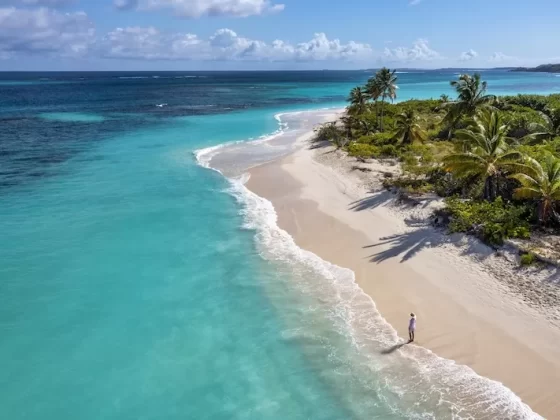In this article, I’ll consider what assets you can move offshore and which you can’t. As you prepare your international strategy, or asset protection plan, these are the assets you should focus on. These are the assets you can easily move out of harm’s way and those you should leave alone. Here’s my take on what assets can move offshore.
Let me start with the assets that you shouldn’t move offshore. They are your home, primary residence and rental properties… basically any US real estate. Sure, you can create some complex offshore trust and title the property in the name of that structure. But, real estate is always stuck in the United States and subject to the whims of a US judge.
And offshore structures for US real estate come with all kinds of risks. For example, the many US filing requirements the offshore structure required and the risk that you’ll lose the $250,000 tax exemption on your primary residence.
There are many firms that sell offshore structures for US real estate. I believe these are a waste of time and bordering on a scam by the incorporator. The above risks and costs, combined with the fact that real estate can’t be moved, make offshore structures to protect them dubious at best.
The other asset you shouldn’t move offshore is any asset that a current or reasonably anticipated creditor can make a claim against. To move cash or other assets out of the United States to avoid a current or reasonably anticipated creditor is a fraudulent conveyance.
If you’ve already been sued, it’s definitely to late to set up an offshore structure to protect your assets from that creditor. You can form and fund an offshore trust, but you must leave enough money in the US to satisfy any current or reasonably anticipated creditor.
Now let’s talk about what assets you can move offshore.
In 99% of the cases, clients are best to move cash offshore. If you have a stock or gold portfolio, you should sell and rebuy abroad. If you have a US retirement account, convert that to cash and move the IRA offshore (I’ll describe how to do this below). If you have a defined benefit plan, sell, convert it to an IRA, and take it offshore.
The key to a clean move offshore is to convert what you have now, pay the capital gains taxes, and move the cash offshore. You can always rebuy if you must hold gold or a particular stock.
As for real estate, if you can borrow against it, either through a loan or line of credit, you can move that cash out of the United States. Back in the day, reducing the value of US real estate through loans was the best way to protect it from creditors. Today, it’s challenging to find a lender.
Note that I’m not suggesting you borrow against the property and then fail to pay the mortgage! I’m saying you can borrow against US real estate and move that money out of the United States to protect against civil creditors. The purpose is to limit the value of the property to dissuade someone from suing you. You must always pay the lender.
Once your assets are in cash, you can select your level of protection. The most advanced offshore strategy will include an offshore trust and possibly a private placement life insurance policy so the money can grow tax-free or tax-deferred. International trusts are generally recommended for those with $1 million or more to protect or a high risk of litigation. Life insurance inside an offshore trust is usually for those with $2.5 million or more in liquid assets.
For smaller accounts, we often recommend a Panama Foundation. This is a hybrid holding company and trust that’s more efficient to setup and operate.
If you have a US retirement account, such as an IRA or 401-k, you can take it offshore by forming an offshore IRA LLC. You can also take a US defined benefit plan offshore if you plan allows for a conversion to an IRA.
You can take any vested IRA offshore. A retirement account has vested when you leave your current employer and are in control of the investments. In some cases, an IRA with an existing employer can vest after 5 to 10 years of employment.
With this in mind, the process to take a US retirement account offshore is as follows:
- Confirm the account has vested,
- Transfer the account from your current custodian to one that allows for offshore transfers,
- Form an Offshore IRA LLC,
- Open a bank account under that Limited Liability Company, and
- Transfer the assets (cash) from the US custodian to your IRA LLC.
Once this is complete, you’re in control of the account and will be able to manage the assets for the benefit of the retirement account. Of course, you still need to follow all the US rules, but your IRA assets will be out of the United States and protected.
If you’re considering traveling or moving abroad, be sure to explore your healthcare options. Visit International Citizens Insurance to learn more and get a free quote.










